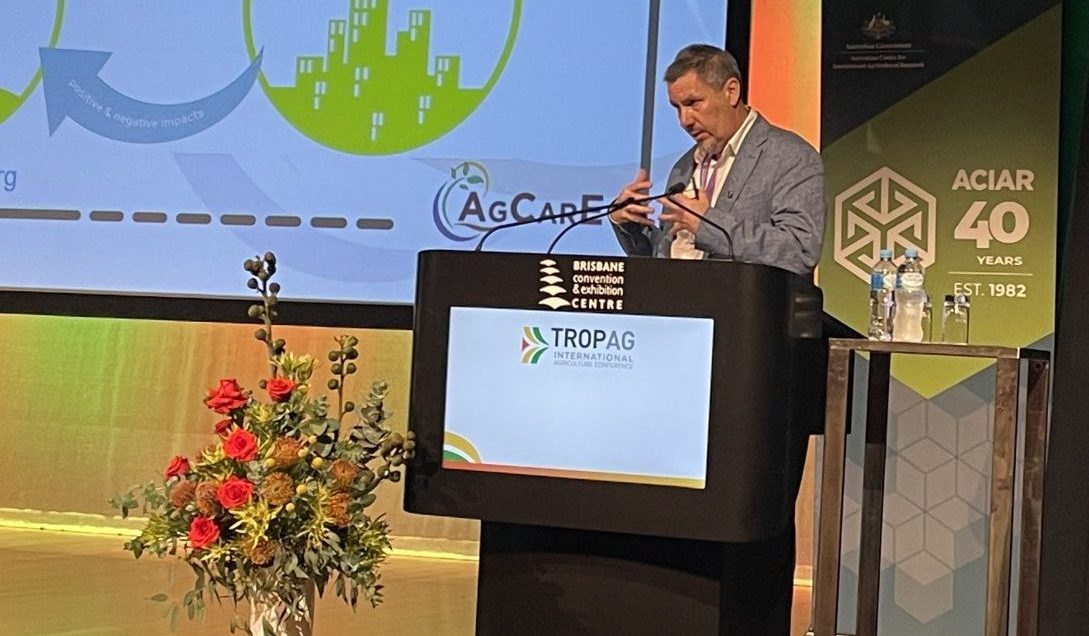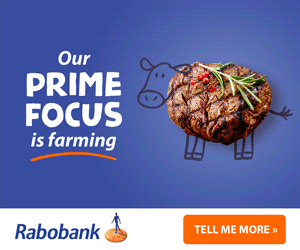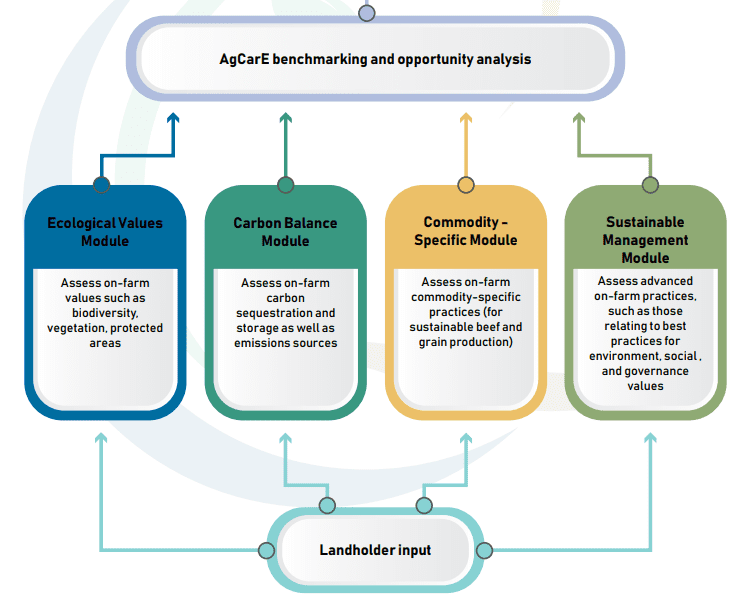
AgForce senior policy advisor Greg Leach presented at the TropAg Conference last week.
AFTER working on the program for five years, Queensland agriculture advocacy organisation, AgForce, is next week hard launching its natural capital certification system, AgCarE.
Developed for a range of commodities, such as grain, beef, sheep, goats and sugarcane, the model aims to offer a reliable and accurate measurement of a property’s natural capital, which can be leveraged to open new markets and possiby create new sources of income for the producer.
AgForce senior policy advisor Greg Leach introduced the program at the TropAg Conference held in Brisbane last week.
Dr Leach said the framework is the culmination of years of work with Queensland producers to create a model that is fit for purpose and does not overlap existing systems such as Cotton Australia’s myBMP.
He said the entire process has been driven by the interests and demands of these producers.
“Members have been very keen to just unpack and through participatory technology development process have looked at natural capital and trying to think what it means for them,” Dr Leach said.
He said the first steps involved creating 10 metrics which formed the basis for how data was collected and interrogated on a property.
These include: views of the landowner; plans for the property; remnant and non-remnant vegetation management; biodiversity; water efficiency; stock levels; cropping management, and energy footprint.
Dr Leach said the initial framework also featured the investigation of several possible benefits to producers in measuring natural capital, such as diverse income streams, improvements to bank interest and lending arrangements, and increased property value.
“This is where we started out 2019 and tested that framework with 37 farmers across Queensland and yielded a whole lot of interesting information.
“Largely speaking, the producers were ecstatic that they were able to look at the whole system and start to get a gauge or a position on natural capital.
“Interestingly, the first round of testing basically provided a score over 30, and average was 16.5.
“There was quite a few that are under the margin, but they were happy to hear that and at least have a rationale as to…where they are, and what might be possible for improving that position.”
The ten metrics were condensed into four modules – ecological values, carbon balance, commodity particulars and sustainability metrics – which is the final AgCarE framework.

The AgCarE framework features four modules. Source: AgForce
This framework was then reviewed by a reference panel made up of scientists from CSIRO, Australian National University and Queensland Herbarium and others.
“This group of scientists has been through a AgCarE in detail and have given it a thumbs up in terms of being a good means of starting the conversation and providing a reasonable position of natural capital on property.
“This group has now developed a four-stage process of verification of the assessment, which is fantastic.”
Dr Leach said the testing has now expanded 75 properties over 3 million hectares.
Interest from international markets
Dr Leach said since the early rounds of testing it was clear that producers wanted to ensure the framework was aligned with existing international frameworks and could be accepted by global markets and consumers.
“A large learning from the first round of testing was the farmers themselves said that we really need to be sure that we’re aligning our lines of inquiry with standards that are expected, both nationally and internationally.
“The renovations we did to the survey and with the lines of questioning were in relation to a number of international positions on things.”
He said this included researching existing programs and organisations, like the International Sustainability and Carbon Certification and the Global Roundtable for Sustainable Beef.
Dr Leach said this work is now paying off with national and international bodies taking an interest in AgCarE and looking into how they can verify and adopt the program.
“The market opportunities for AgCarE are growing day by day.
“We are linking with so many organisations now across Australia that are coming to us.
“I’ve also just come back from Germany, where a large commodity purchaser of Australian…raw materials has got sight of AgCarE.
“They said this meets our ESG requirements in terms of the European Union, and we’ll follow you over to talk to us and tell us about it.
“They are really quite keen on AgCarE and have supported it and they will go to drawing up service delivery arrangements with producers.”
Costs to producers
Dr Leach said currently the price for an initial assessment range from $3000-$7000, with a repeat measurement costing about $1500.
“The question of cost is critical, and what we have found is that most of the work we can do is remotely by using existing available data from satellite imagery, national data sets and so forth.
“When that is combined with a list of approximately 160 questions to the landowner, that brings those two data sources together to give a specific reflection of that property.”
He said using publicly available data also decreases the time burden of the process on landowners.
AgCarE will officially be launched at the AgForce annual general meeting to be held at Mt Isa on Tuesday, November 15.
The system is available to any producer to use, not just those based in Queensland or AgForce members.

The AgCarE assessment cost is ridiculous and unworkable. Farmers bare all the costs of improving natural capital and maintaining it across their properties then are asked to pay a third party for assessing what they have done. The farmers should be paid for their time providing the trend data demonstrating natural capital improvement, not the other way around. On farm natural capital improvement has all sorts of co-benefits for ecosystem functions, landscapes and greenhouse gas abatement that benefits the whole Australian and world community, but where is the ongoing recognition for the landowners that make it happen 365 days a year? The AgCarE approach to auditing is likely to fail just like it failed with on farm environment management system auditing 20 years ago.